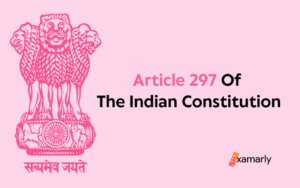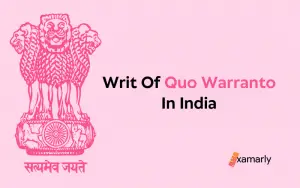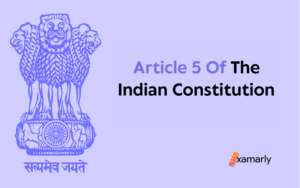Muiz ud din Qaiqabad was the tenth sultan of the Mamluk/Slave Dynasty in India. He was the grandson of Ghiyas ud din Balban and the son of Bughra Khan. His rule was short, during which he built several major mosques and constructed several palaces.
Despite short, his rule had significance for the Delhi Sultanate, which was in a state of political instability during his reign. This article will explore the life and legacy of Muiz ud din Qaiqabad and his impact on the Delhi Sultanate.
Muiz ud din Qaiqabad – Historical Background
He was the tenth independent Sultan of Delhi from 1287 to 1290. He succeeded his father, Bughra Khan and grandfather, Ghiyas-ud-Din Balban. He ruled for three years before his assassination.
During this time, he had become a puppet of a wicked minister. When some well-wishers hints at the machinations of the minister, the Sultan called the minister and repeated, “So and so has spoken of you.” He then proceeded to seize the person and punish him.
He ascended to the throne when he was seventeen years old. In his final years, he negotiated a peace treaty between Bengal and Hindustan, but was murdered by his own noble. This led to the emergence of the Khilji Dynasty, which lasted for the next six centuries.
When Qaiqabad came to the throne, he was seventeen or eighteen years old. His grandfather Balban had raised him under strict conditions, allowing him no pleasures of any kind. He had a splendid palace in Kilokhari, but neglected government affairs. Instead, he dedicated himself to the company of women and music. The name of the city of Muiz ud din was derived from the city’s ancient Arabic name, Muroqabad.
You might also like to read our article on Delhi Sultanate Questions and Answers to strengthen your UPSC preparation.
Muiz ud din Qaiqabad – Early Life & Education
Muiz ud din was born and raised in the court of his grandfather in Delhi, India, which was the capital of the Delhi Sultanate. He would have received a royal education. This would have included Islamic theology, law, and philosophy, as well as training in warfare, hunting, and other royal pursuits.
He may have also received training in governance and administration, as he was appointed as the governor of Multan by his father, Bughra Khan. This suggests that he had some experience in governing a province before he became the Sultan of the Delhi Sultanate.
Despite his education and experience, Muiz ud din Qaiqabad was not considered a strong or capable ruler.
Also read about:
Reign of Muiz ud din Qaiqabad
The Delhi Sultanate was established in India in 1206 by Qutb ud din Aibak, a former slave of Muhammad Ghori. The Slave Dynasty was the first dynasty of the Delhi Sultanate, and it ruled from 1206 to 1290. During this time, the Sultanate expanded its territories through conquests and established a strong centralized state that was characterized by a combination of Islamic and Indian cultural influences.
- Ghiyas-ud-din Balban, was killed by the Mongols and his son, Bughra Khan, did not want to succeed his father, so he declared the eldest son, Kay Khusroe, as his successor.
- In 1290, the king’s descendants installed Qaiqabad as the new ruler of the Delhi Sultanate. However, by the time Muiz ud din came to power, the Delhi Sultanate was in a state of political instability.
- The previous few decades had seen the wave of dissent of several powerful provincial governors who challenged the authority of the Sultan and sought to establish their own independent kingdoms. There were also external threats to the Delhi Sultanate, such as the Mongol invasions from the north and the Mamluk invasion from Egypt.
- The Sultan ruled the capital of Delhi for about three years, during which time he indulged in women and a life of wine.
- Jalaluddin Khilji was actually a close advisor and general in the court of Muiz ud din. After his death, Jalaluddin Khilji led a successful coup and became the Sultan of the Delhi Sultanate, establishing the Khilji Dynasty.
It is said that Muiz ud din’s weak and ineffective rule paved the way for the rise of Jalaluddin Khilji, who was able to capitalize on the political instability of the time and establish a new dynasty that would dominate the Delhi Sultanate for the next three decades.
If you know that Qutbuddin Aibak built the famous Qutb Minar in Delhi, you might also like to read about the following:
Coinage under Muiz ud din Qaiqabad
Muiz ud din minted coins in gold, high-quality silver, copper, and billon just like his predecessors. During his reign, the coinage of the Sultanate continued to feature the usual Arabic inscriptions and calligraphy that had been in use since the time of his predecessors.
- The silver coins that were issued during his reign were known as Tanka, and they were mostly issued from the Delhi mint.
- The Tanka coins issued during the reign of Muiz ud din were similar in weight and design to the coins that had been issued by his predecessors.
- They were made of high-quality silver, and their design featured the name of the Sultan in Arabic script, along with other inscriptions that typically featured on Islamic coinage, such as the name of the issuing authority and the date of issue.
- Some of the coins issued during his reign also featured the image of a lion, which was a common symbol of power and authority in Islamic coinage. This symbol was also used on the coins of his predecessor, Ghiyas ud din Balban.
While the coinage of Muiz ud din Qaiqabad did not introduce any significant changes in terms of design or weight, his reign was marked by political instability and a decline in the power of the Delhi Sultanate. This meant that his coins may have been less widely circulated and less valued than the coins of other stronger and more stable rulers of the Delhi Sultanate.
Also read about the Sayyid Dynasty in India.
Muiz ud din Qaiqabad – Death
His death was shrouded in mystery, and there are several accounts of how he died.
- According to one account, Muiz ud din Qaiqabad was murdered by his own nobles in a conspiracy to overthrow him. The nobles were unhappy with his rule and saw an opportunity to take power. They poisoned him and then suffocated him to death with a pillow while he was unconscious.
- Another account suggests that he died of natural causes. According to this account, Muiz ud din Qaiqabad was suffering from a severe illness, possibly tuberculosis or smallpox, which eventually proved fatal.
- Yet another account suggests that he was killed in battle. Muiz ud din Qaiqabad was known to be a capable military commander, and it is possible that he died while leading his troops in a battle against a neighboring kingdom.
Regardless of the cause of his death, Muiz ud din Qaiqabad’s reign was marked by instability and conflict, both within his own court and with neighboring kingdoms. His death marked the beginning of a period of political turmoil in the Delhi Sultanate, as rival factions fought for power and control.
You might also like to read about: Lodi Dynasty.
Succession
Shams ud din Kayumars, muiz ud din’s son, ascended to the throne in 1290 CE. He was not a particularly strong or capable ruler, and his reign was marked by further instability and conflict. He faced opposition from his own nobles, who sought to undermine his rule and seize power for themselves. In addition, he faced external threats from neighboring kingdoms, particularly the Mongols.
Despite these challenges, Shams ud din managed to hold on to power for a little over a year before he was overthrown in a palace coup by Jalaluddin Khilji. The succession of Shams ud din Kayumars after Muiz ud din Qaiqabad was part of a pattern of weak and ineffective rulers that characterized the later period of the Delhi Sultanate.
Also read about the Tughlaq Dynasty that came right after the Khiljis on the Delhi Sultanate.
Summary
Muiz ud din’s reign was marked by political instability, rebellions by provincial governors, and external threats.
He was a weak ruler who was unable to effectively govern his kingdom or establish his authority over his rebellious subjects. His reign paved the way for the rise of the Khilji Dynasty, which overthrew the Slave Dynasty and established a new era of stability and prosperity in the Delhi Sultanate.
FAQs about Muiz ud din Qaiqabad
Who was Muiz ud din Qaiqabad?
Muiz ud din was the 10th Sultan of the Slave Dynasty who ruled on Delhi from 1287 to 1290. He succeeded his father, Bughra Khan, and was known for his weak and ineffective reign.
What was the duration of his reign?
His reign lasted for only three years, from 1287 to 1290.
Why is his reign considered ineffective?
Muiz ud din Qaiqabad’s reign was marked by political instability and a decline in the power of the Delhi Sultanate. He was not a strong ruler, and many of his decisions were influenced by his courtiers and advisors. He was also unable to suppress rebellions and maintain law and order in his kingdom.
Who succeeded Muiz ud din Qaiqabad?
After his death in 1290, his son, Shamsuddin Kayumars, became the Sultan of the Delhi Sultanate. However, his reign was short-lived, and he was soon replaced by Jalaluddin Khilji.
What were some of the major events during his reign?
During his reign, there were several rebellions and uprisings by provincial governors, which he was unable to suppress. He also faced threats from external enemies, such as the Mongols and the Mamluks of Egypt. One of the major events of his reign was the sack of Delhi by the Mongols in 1288, which caused significant damage to the city and its inhabitants.






